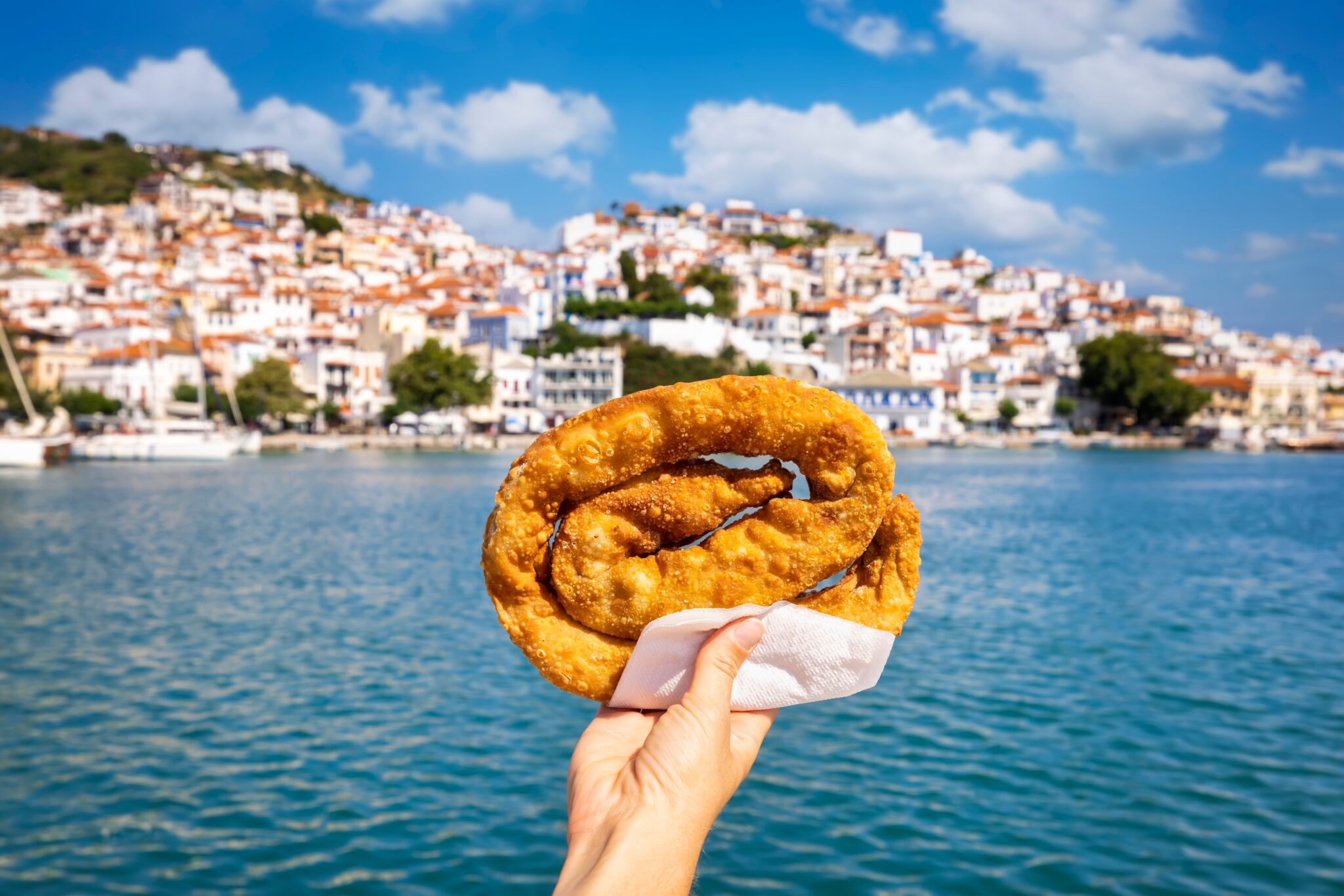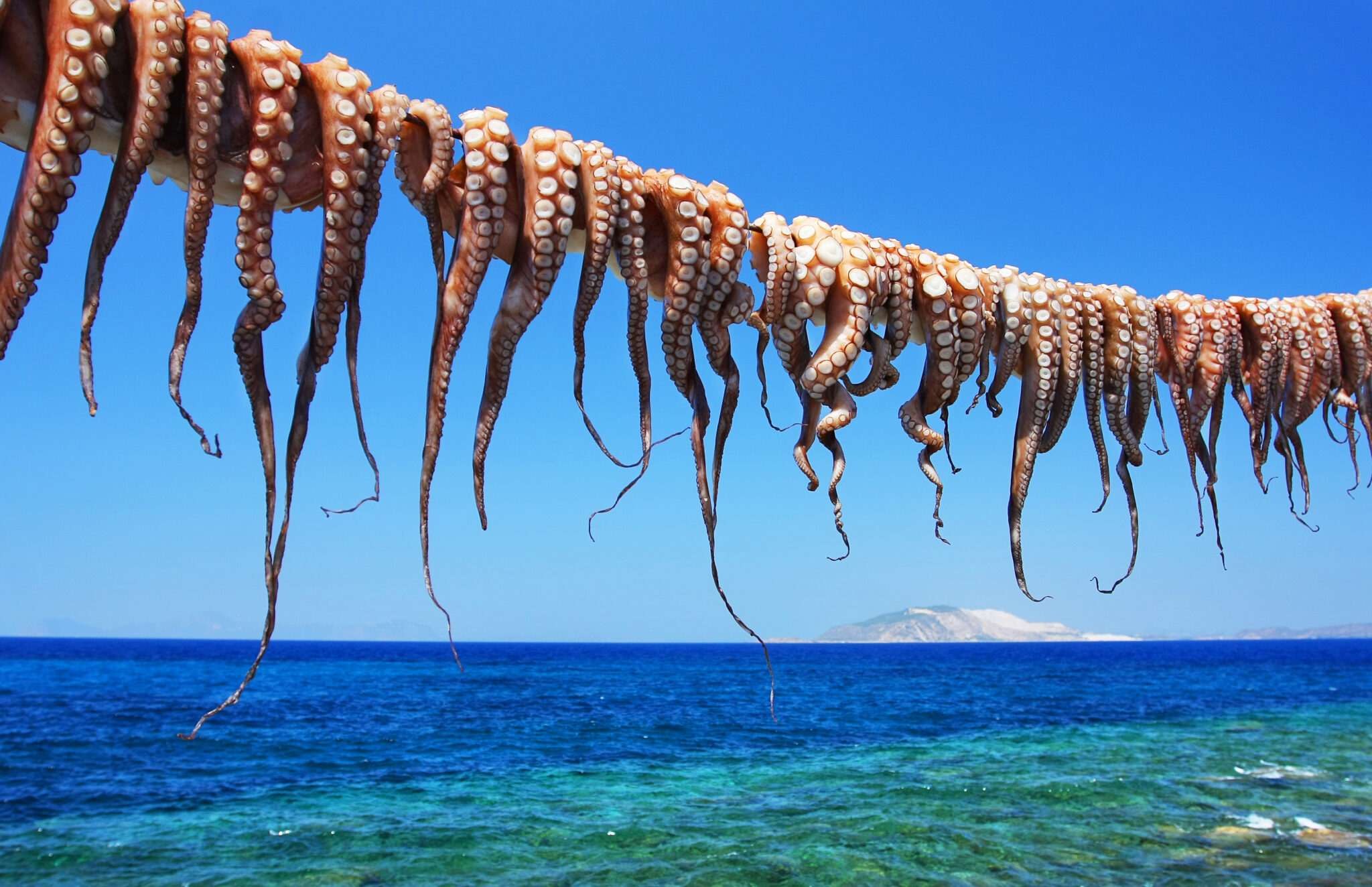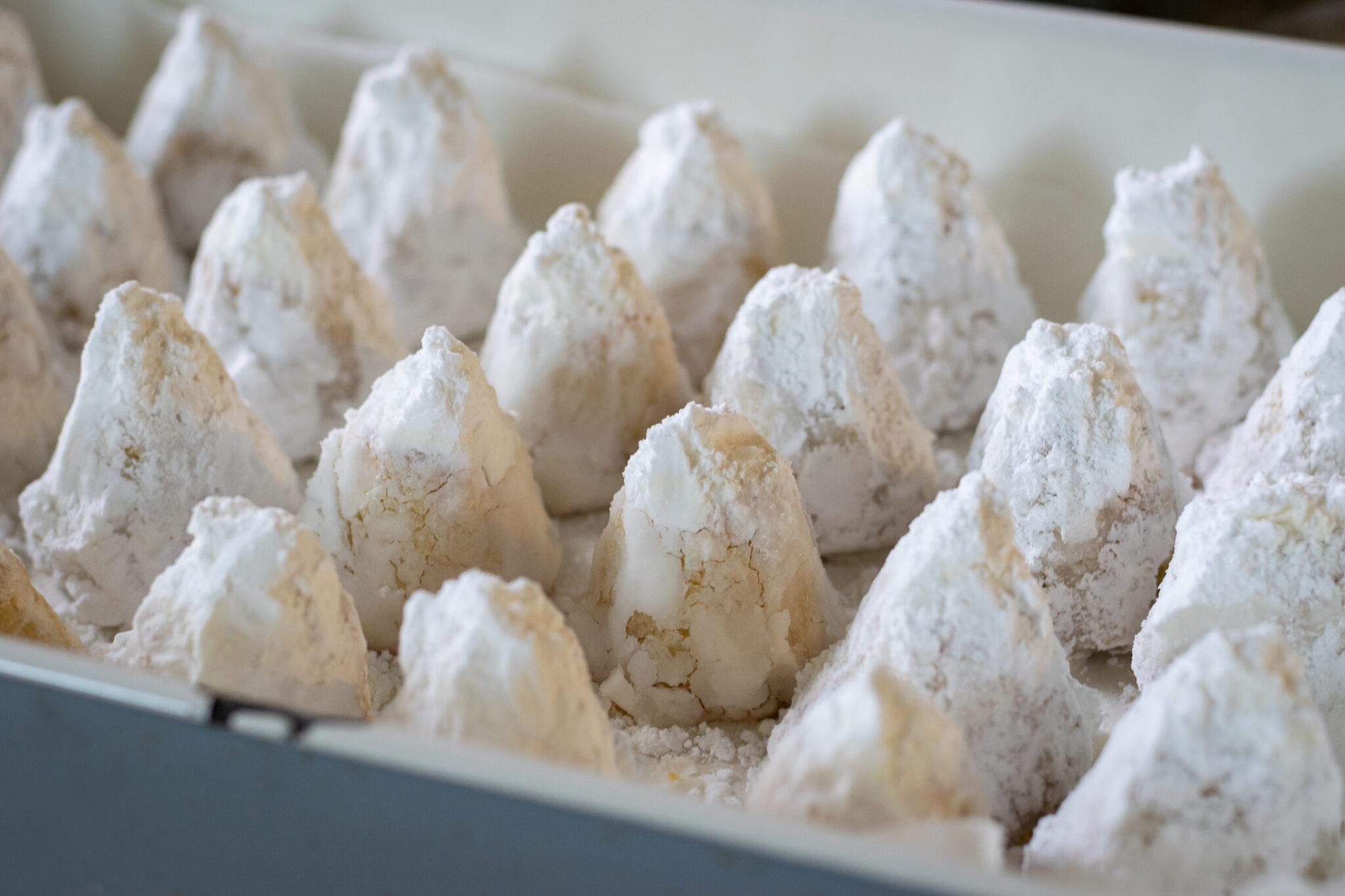The traditional cuisine of the island is largely influenced by farming, with characteristic dishes such as Skopelos cheese pie and sweet and sour goat. While fishing is not the main focus of the cuisine, seafood such as octopus and shellfish are featured prominently in many of the island’s traditional recipes. The Skopelos plums are a unique creation of the island and feature in several dishes, along with various fruit trees, olives, and cheese. For those with a sweet tooth, Skopelos offers delightful desserts like “avgato” and “chamalia.”
The famous twisted Skopelos cheese pie, plums, sweet and sour flavours, and the delicious Skopelos goat are some of the characteristic elements of the island’s traditional cuisine. Despite having a serious commercial fleet until the 19th century, Skopelos’ traditional cuisine was never based on fishing. Perhaps the northeast winds and fear of piracy turned the islanders towards farming. In contrast to fish, which mainly appeared on the tables of a few professional fishermen, seafood that did not require expensive equipment to catch, such as octopus, sea urchins, shellfish, even shrimp, prawns and lobster (once a poor man’s food) have a significant presence in the traditional cuisine.
Pig and poultry farming have been and continue to be at a household level, while there is a lack of cattle. Goat farming, on the other hand, thrives, with some of the herds belonging to the purebred “Skopelos goat” (which currently has only a small number of livestock), and there are only a few flocks of sheep. Cheese-making is also practiced at a household level in the villages, producing a white cheese similar to feta, myzithra, yogurt (in small quantities), and butter.
The famous Skopelos plums were created by grafting the sour cherry plum from Mount Athos, which then thrived on the island (efforts are being made to classify them as a PDO product. The plum trees adapted very well to Skopelos and there are currently about 10 varieties on the island. The red sour plums are used to flavour dishes and are even included in recipes with tomato, such as the “red-stewed” goat and lentils, giving a delicate sour taste. The sweet black plums are used in many dessert recipes, as well as in savory dishes, while the yellow plum is used to make a wonderful spoon sweet compote. Today, there is a certified organic farm that produces both sweet and sour plums.
In addition to the plums, pears have also been systematically cultivated and are still grown. You’ll also find both sweet and bitter almonds as well as a host of different fruit trees, as evidenced by traditional spoon sweets compotes, jams, and liqueurs made from their fruits. The olives grown on the island belong to the polymorphic variety of adrokarpia (Voliota, Amphissa, Agrinio) and produce excellent extra virgin olive oil. Olives are prepared in various ways, such as pickled olives in local vinegar, “patites” olives (black olives processed with coarse salt, to efface the bitterness, then cured with salt, and preserved in olive oil), unripe green olives either cut and slightly pressed or cured.
Characteristic dishes of the traditional cuisine of Skopelos include the famous Skopelos cheese pie – although there is still much debate about its origin since both the islanders of Skiathos and Alonissos claim it as their own. Other dishes include meatballs with a sweet and sour sauce with plums, a goat with wild greens in a creamy egg-lemon sauce, goat with hilopites (a type of pasta), goat with artichokes, goat with plums and quince, fried anchovies in tomato sauce, lobster with orzo, salted cod dished out with plums and potatoes, crabs with a light tomato sauce.
They also serve up gounes (sun-dried fish), octopus prepared in various ways (including sun-dried), and galopetdes (deep-fried sea anemones). “Tsitsiravla” (tender tips of wild artichokes) and pickled winged beans (as they are made on the mainland of Greece), as well as pickled rock samphire, as common meze dishes to accompany tsipouro (the local strong and firey grape distillate).
As for desserts, the most famous and rare sweet is “avgato,” an amazing spoon sweet made from apricots. Other delicious sweets include “chamalia,” unbaked almond sweets in irregular shapes that are usually made for festivals, weddings, and baptisms; “rozedes,” unbaked spherical sweets made of walnuts or almonds and sugar; and as previously mentioned a plethora of spoon sweets, jams, and fruit-based liqueurs.
Read also:
Experience the Best of the Sporades: Hiking on Skopelos Island
Skopelos is not for tourists, it is for lovers -Epifanios Skiathitis writes about his island













